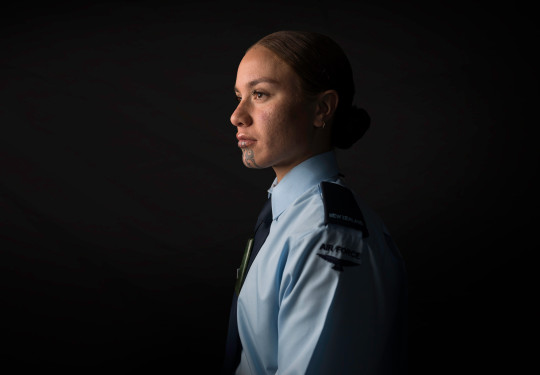RNZAF 85: Aircraftman Kanapa Kerr
Served 2021 - current
Being able to hold on to tradition and history while embracing a highly skilled, adaptable and modern Air Force is a reason Aircraftman Kanapa Kerr loves being in the Service.
08 April, 2022
After graduating at the end of last year, Aircraftman (AC) Kerr became the third generation of Air Force aviators in her family, following in the footsteps of her grandmother, Te Rerehau Racheal Patrick and aunt, Angela Patrick, who served as a Pilot Officer for the supply squadron.
A fierce advocate for te reo and te ao Māori, AC Kerr had been teaching at a Kohunga reo school when she decided she wanted a change in her environment, but didn’t want to lose touch with her culture.
“When I heard that my grandmother was in the Air Force that helped me to decide it was where I wanted to be.”
Attracted to the firefighter trade, AC Kerr said she enjoys an active job that comes with an occasional adrenalin rush. After graduating she was deployed to work in a Managed Isolation Facility, but is now posted to Base Woodbourne’s firefighter unit.
“In the future I see myself staying with the trade, but who knows what will happen.”
AC Kerr grew up in Papamoa and was raised by her whaea (aunt) Waka, a staunch wahine Māori, and her matua keke (uncle) Pirini – both passionate about te reo Māori and the culture. She went to Kura Kaupapa Māori, te reo immersion schools.
“They played a key role in supporting the love I have for my own culture. We did a lot of learning outside the classroom going to marae and going to Māori war commemorations. History was always an important thing.”
With family ties to Tauranga and Taupō, AC Kerr’s iwi are Ngāi Te Rangi and Ngāti Tūwharetoa and Te Arawa. She also has links to Tūhoe and Te Whakatōhea.
“I’m very supportive of the Defence Force acknowledging that an incorporation of Māori culture and language makes for a stronger force. There is certainly a time and place to use te ao Māori but sometimes there needs to be greater understanding – which I guess just gives us more work to do. So there needs to be a bit more work done in that area.”
She received her moko kauae before joining the Air Force, but was encouraged that the organisation was accepting of facial tā moko.
“My inspiration to having a moko kanohi are my whaea and matua who both have moko kanohi, and now four of us, their tamariki, have it.
“I see it as something that should be normalised. Whenever I see it in the mirror or someone mentions it to me it helps to keep me grounded in my culture. I don’t want to lose my track and seeing my moko kauae keeps me on track.
“I’m pretty stoked that the Defence Force overall is slowly letting Māori normalise facial tā moko in the military. As we’re living in modern times, it welcomes old traditions. It pairs up history and tradition with a modern Air Force.
“I stand today, wearing my kauae, and I think that in itself, tells that I am unapologetically Māori. It addresses the history of our people and says I am proud of my ancestors, and where I come from. I am proud to be Māori.”
